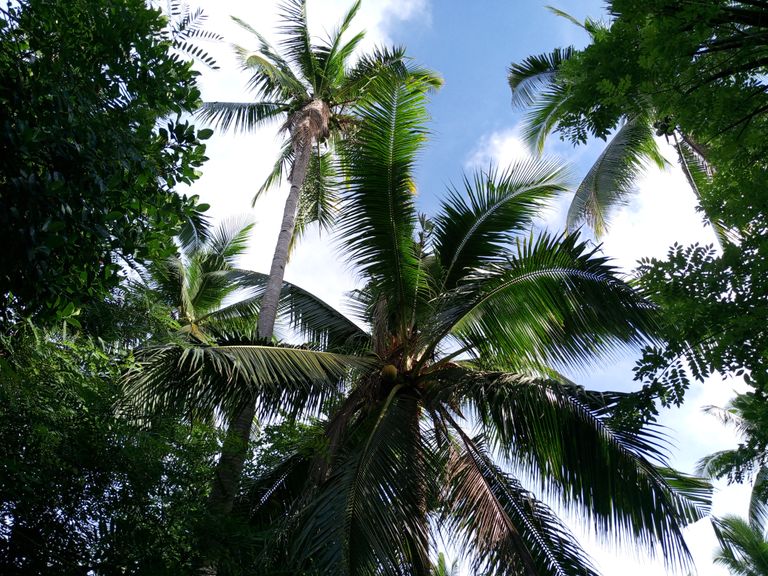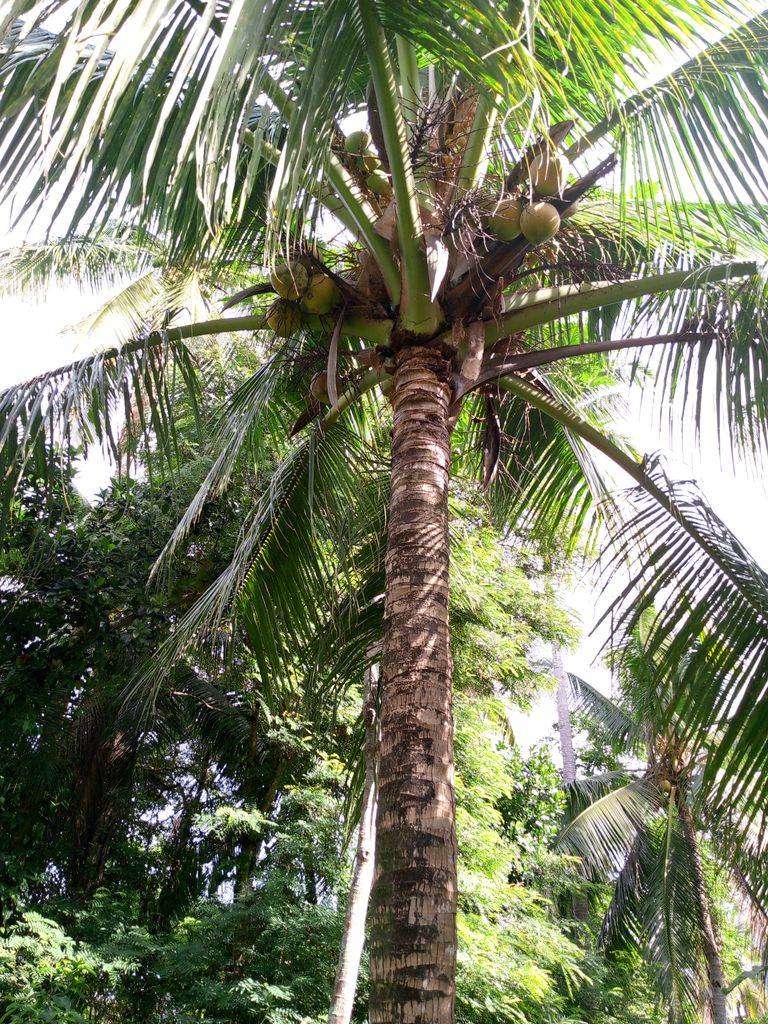
Coconut trees (Cocos nucifera) are tropical palm trees that belong to the Arecaceae family. They are known for their tall, slender trunks and large, feathery leaves.


Here are some key points about coconut trees:
• Distribution: Coconut trees are native to the tropical regions of the world and are found in coastal areas of countries such as India, the Philippines, Indonesia, Thailand, Brazil, and many islands of the Pacific and Caribbean.
• Appearance: Coconut trees can grow up to 30 meters (98 feet) tall and have a single, smooth, grayish-brown trunk. The trunk is slightly curved and ringed with leaf scars. At the top of the tree, there is a crown of pinnate leaves that can grow up to 6 meters (20 feet) in length.
• Coconuts: The most notable feature of the coconut tree is its fruit, known as the coconut. The coconut is a large, round, fibrous drupe that measures about 30 centimeters (12 inches) in diameter. When mature, it has a hard, brown outer husk and a woody inner shell. Inside the shell, there is a white, fleshy meat and a hollow cavity filled with coconut water, a refreshing and nutritious liquid.
•Uses: Coconuts have a wide range of uses. The meat can be eaten raw or used in cooking, and it is also processed to produce coconut milk, coconut cream, coconut oil, and desiccated coconut. Coconut water is a popular drink and is often consumed fresh or used as a base for beverages and smoothies. The fibrous husk is used for making ropes, mats, and other woven products. The leaves can be used for thatching, and the trunks are used in construction.
• Economic importance: Coconut trees have significant economic importance in many tropical regions. They are a valuable source of food, oil, and other products, and their cultivation and trade provide livelihoods for many people. Coconut palm farming is an important industry in several countries, contributing to the local economy and export markets.
• Environmental significance: Coconut trees also play a crucial role in coastal ecosystems. Their extensive root systems help stabilize coastal soil and prevent erosion. Additionally, coconut trees provide shade and shelter for various plant and animal species.
• Symbolism and cultural significance: Coconut trees are often associated with tropical paradise, beaches, and relaxation. In many cultures, they hold symbolic and religious significance. They are featured in folklore, art, and traditional ceremonies of coastal communities.
Thank you for your support. May God Bless us all 🙏❤️.
Congratulations, your post has been curated by @r2cornell-curate. Also, find us on Discord
Felicitaciones, su publication ha sido votado por @r2cornell-curate. También, encuéntranos en Discord